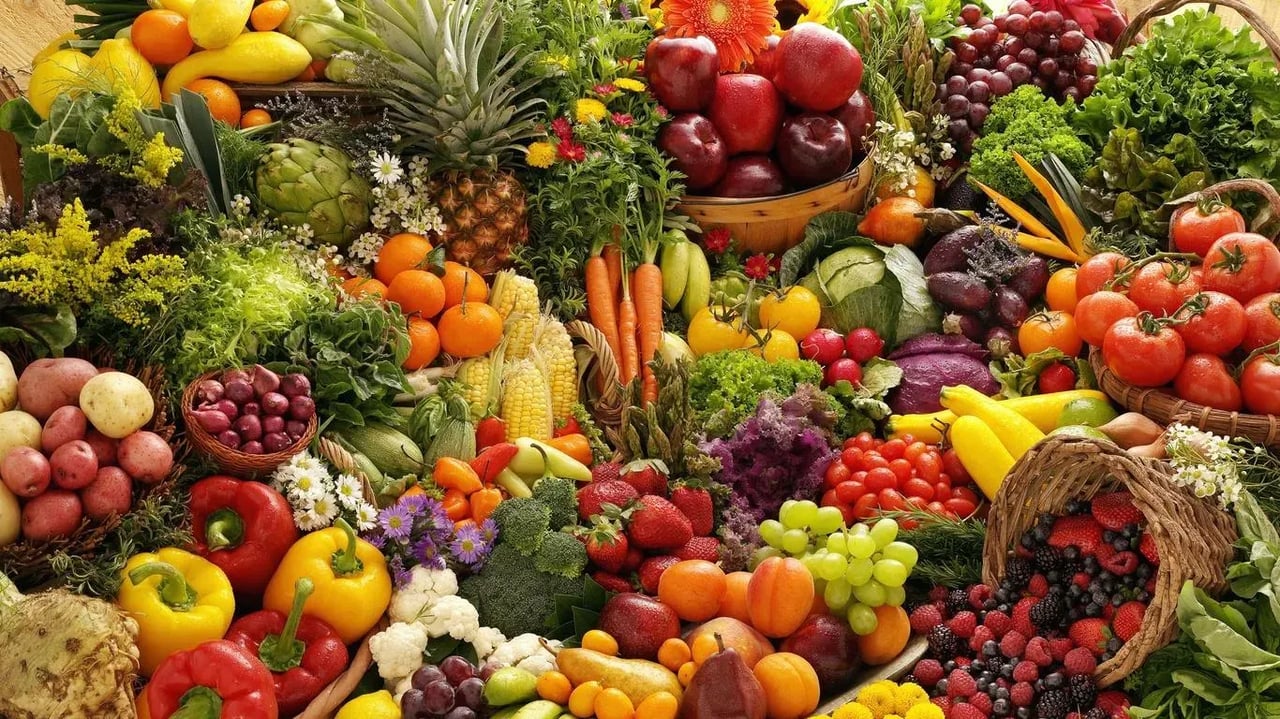The Global Effort To Map Biomolecules In Food To Health Outcomes
Forbes March 27, 2024
Lifestyle

Forbes March 27, 2024
Lifestyle

What’s in our food? Believe it or not, we still don’t know.
We don’t have reliable indexes of the biomolecules in an overwhelming majority of what we eat, a team of global scientists say—which is information that would be crucial to more significant advances in how we grow our food, community nutrition security, food is medicine, and combating diet-related disease.
Across the countless edible species on the planet, there are about 26,000 biomolecules—the proteins, carbohydrates, lipids, nucleic acids, vitamins, hormones, and other materials that keep our cells functioning.
Here’s the unbelievable truth: Many existing databases dedicated to analyzing food composition typically include only up to 150 biomolecules. This means we understand less than 1 percent of what makes up our food—and how the food we eat can make or break our health.
The new Periodic Table of Food Initiative (PTFI) could be literally life-changing—and will have huge implications for food system transformation.
The PTFI is a global initiative to create an open-access platform that will help facilitate molecular analysis on edible food items and standardize the way that data is collected and distributed. Hence the name—a periodic table of food! It’s really cool.
“Rather than only focusing on the few commonly analyzed components of a handful of foods, our goal is to enable the mapping of the entire complex makeup of many permutations of every food on the planet in a standardized and open format,” says John de la Parra, Ph.D., the Director of the Food Initiative at The Rockefeller Foundation. “This way, the information can be universally used to benefit human and planetary health.”
This is an ambitious project. The PTFI relies on cutting-edge spectrometry and analytics technology, and top scientists and researchers from every continent are working on it. The project’s secretariat is facilitated jointly by the American Heart Association AHA 0.0% and the Alliance of Bioversity International and CIAT, with significant financial support from The Rockefeller Foundation and other funders.
“The power of the Periodic Table of Food Initiative is the power of partnership,” says Selena Ahmed, the Global Director of the PTFI through the American Heart Association. “By providing standardized tools, data, and training to map food quality, we are enabling a common language among a global ecosystem to better understand our food—so we can collectively better manage food systems for people and the planet.”
A recent article, published in the journal Nature Food by the group of more than 50 scientists, shows that the PTFI is making significant progress: PTFI researchers have identified 1,650 priority foods that will be initially analyzed for the Periodic Table of Food.
The foods that’ll be analyzed represent an incredibly diverse cross-section of the planet’s present and future food ways. Foods—animal products, plants, mushrooms, aquatic species, fermented ingredients, and more that are either commonly consumed or culturally important—were nominated by agricultural researchers, biochemists, nutritionists, ethnobotanists, activists, and civic leaders from around the globe, and their lists were then reviewed by other stakeholders to identify gaps.
And the process of identifying these foods revealed just how little we truly know about the molecular breakdown of what we eat. Only about one-third of foods on the PTFI list overlap with global databases compiled by the U.S. Department of Agriculture and UN Food and Agriculture Organization.
This means that, for more than 1,000 of the world’s most important foods—including many Indigenous and heirloom varieties and “orphan crops”—we may not currently understand how they impact our bodies and health.
But when we’re armed with scientific data, we can strengthen the ways we use food is medicine to boost nutrition security and save lives, and we can build a more sustainable and resilient food system.
“Knowing what is in our foods will illuminate the full value of traditional foods and diet diversity,” says Maya Rajasekharan, Managing Director of Africa at the Alliance of Bioversity and CIAT and Director of Strategy Integration and Engagement of PTFI.
“The list provides an opportunity to reimagine the importance of diversity to make our diets healthier and more resilient to climate change,” she continues. “It will inspire innovations in agriculture and food systems, including crop breeding, to transform the ways we grow, process, and consume food.”
This is a big deal. That’s why the Periodic Table of Food Initiative and partners including Food EDU, The Rockefeller Foundation, the American Heart Association, Alliance of Bioversity International and CIAT, and Food Tank are convening a several-day celebration of food diversity, scientific advances, and community innovation.
Stay up to date on the latest real estate trends.

Seller
December 23, 2025
Hearing talk about home prices falling? That may leave you worried about whether your house is losing value.

Seller
December 19, 2025
The housing market hasn’t felt this energized in a long time – and the numbers backing that up are hard to ignore.

Buyer
December 18, 2025
You may not want to put your homebuying plans into hibernation mode this winter.

December 18, 2025

Buyer
December 16, 2025
One of the biggest homebuying advantages you can give yourself today is surprisingly simple: a flexible wish list.

Seller
December 12, 2025
A lot of people are asking the same thing right now: “Is it even a good time to sell?” And the truth may come as a bit of a surprise...
We Guide Homeowners through the complicated process of selling their home using our 4 Phase Selling Process and 3 Prong Marketing Strategy that alleviates their stress and moves them effortlessly to their next destination. Schedule a 15 Minute Complimentary Strategy Session Today